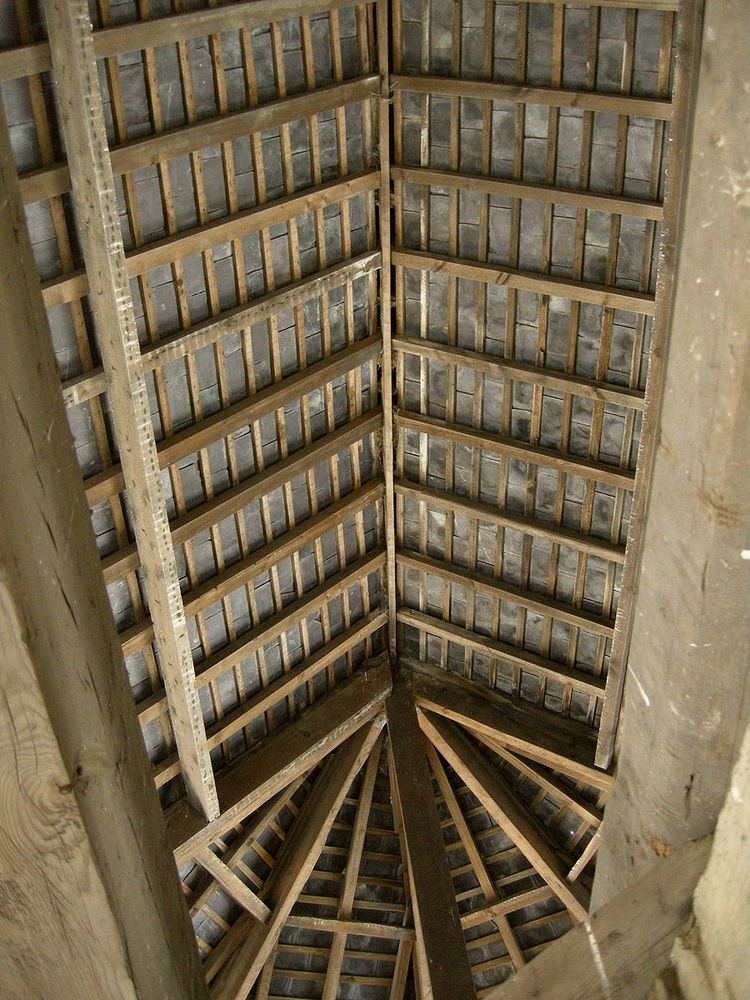 | ||
A rafter is one of a series of sloped structural members (beams) that extend from the ridge or hip to the wall plate, downslope perimeter or eave, and that are designed to support the roof deck and its associated loads. A pair of rafters is a couple.
Contents
Design
A type of beam that supports the roof of a building. In home construction rafters are normally made of wood. Exposed rafters could be a feature of traditional roof styles.
Applications
In recent buildings there is a preference for engineered trusses (trussed rafters) on the grounds of cost, economy of materials, off-site manufacture, and ease of construction, as well as design considerations including span limitations and roof loads (weight from above).
Types of rafters in traditional timber framing
There are many names for rafters depending on their location, shape, or size (see below). The earliest surviving roofs in Europe are of common rafters on a tie beam, this assembly is technically called a "closed couple". Later principal rafters and common rafters were mixed which is called a major/minor or primary/secondary roof system. Historically many rafters, including hip rafters, often taper in height 1/5 to 1/6 of their width, the larger end at the foot. Architect George Woodward discusses the purpose of this in 1860: “The same amount of strength can be had with a less amount of lumber. There is an additional labor in sawing such rafters, as well as a different calculation to be made in using up a log to the best advantage. It is necessary always to order this special bill of rafters direct from the mill, and the result will be that the extra cost will, nine times out of ten, overbalance the amount saved.”. John Muller also discusses a one-sixth taper for rafters. Pieces added at the feet to create an overhang or change the roof pitch are called a sprocket or coyau in French. (The projecting piece on the gable of a building forming an overhang is called a lookout. A rafter can be reinforced with a strut, principal purlin, collar beam, or rarely an auxiliary rafter (see below).
Rafter types include:
